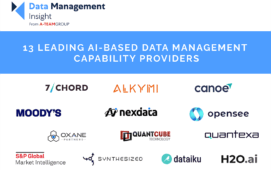Data management continues to be a drag on insurance companies preparing for Solvency II, but not all are falling behind with some using the regulatory mandate to develop data management infrastructure that will drive both compliance and business benefits from investment in Solvency II.
Moody’s Analytics’ latest Solvency II practitioner survey, which included in-depth interviews with 45 insurers companies across Europe during the last quarter of 2012 and the first of 2013, shows 24.5% of the firms surveyed are ready to comply with Solvency II, 64.5% are still developing compliance solutions and 11% are in the ‘late’ category with no tools in place.
Despite good progress by some market participants, Moody’s Analytics identifies three areas that still need to be addressed, namely: data quality management; regulatory reporting; and the ability to meet the Own Risk and Solvency Assessment requirements. The issue of embedding the risk culture that Solvency II dictates into insurance business practices is also expected to be a major undertaking for many firms.
Considering the size of the firms surveyed, Brian Heale, senior director of business development at Moody’s Analytics, says: “At one end of the spectrum, large firms have embraced Solvency II as an opportunity to enhance their risk management capabilities and infrastructure. At the other end, we find firms that are addressing the requirements as a rather superficial, regulatory tick-box exercise. These firms are not seizing the opportunity to step beyond compliance and build infrastructure that can help them understand the relationship between risk and capital, and consequently, help them make better informed decisions.”
Heale suggests the major problems for insurers readying for Solvency II are quality data management and automated regulatory reporting. He explains: “For large insurers, the problem is collating all the analytical data required from across financial, actuarial, risk and investment systems that tend to be desktop systems. The data collation and improvement task is large. For example, the regulation’s Quantitative Reporting Templates (QRTs) have 10,000 cells of data alone. Solvency II numbers depend on data and quality, and it is also necessary for firms to show the regulator they understand the requirements and are using quality data. This is not such an issue for smaller insurers, but for those with many subsidiaries consolidating data can be difficult.”
Heale notes piecemeal approaches to Solvency II compliance, but also sustainable efforts to build centralised analytical data repositories – although the build or buy debate continues here – with extract and load, data quality and data profiling tools. He says: “Many insurers have invested heavily in Solvency II and are frustrated that it has been delayed. Some have put projects on hold, but others have moved on to gain business benefits from the investment. They have the data to make better decisions on capital, which means they can decide better on what the product portfolio should be and the investment strategy.” According to the Moody’s Analytics survey, 42% of the survey sample, mostly larger firms, indicates that it has already derived business-related benefits from Solvency II spend.
The problem of regulatory reporting is also attributed to collating and consolidating data at a suitable level of granularity. With so many reports required for Solvency II, including quarterly and yearly QRTs to name just a couple, streamlined, automated reporting becomes the antidote to reporting based on resource intensive manual data collection, spreadsheets and minimal automation.
With the initial deadline for Solvency II reporting now set at January 2016, although some local regulators may bring forward interim reporting requirements, Heale leaves the readiness question in the balance, saying some insurers will and others won’t be ready to comply with the regulation.
Subscribe to our newsletter




